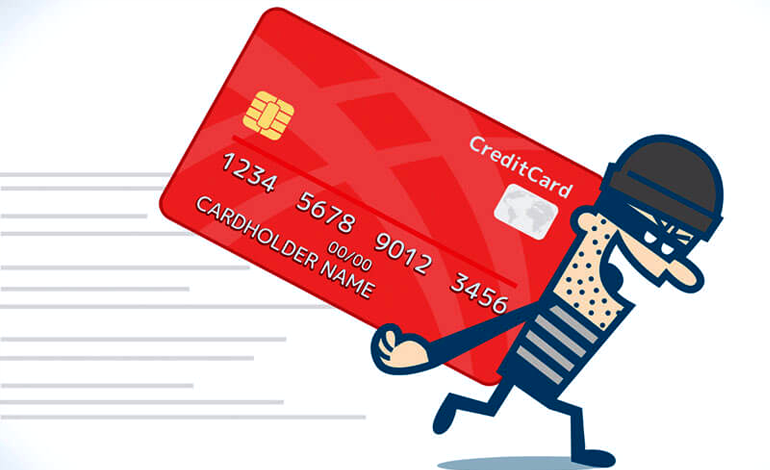Small business risks are unique. They’re not always the same as large organizations — which could explain why small businesses don’t feel that fraud and scams reach them. But they do.
According to the Association of Certified Fraud Examiners report 2018, businesses with less than 100 employees lost twice as much per scheme to fraud, in comparison to companies with more than 100 staff. Much of this is because small businesses lack the internal controls to monitor fraud, making them a perfect target for those who would wish to take advantage.
The report found that across 108 cases of fraud and scams in the retail sector, retailers lost an average of $50,000 each. In food services and hospitality, comparing 76 cases, the number of average losses reached $90,000. For small businesses with small profit margins, $50,000, or even $2,000 is simply too much to lose and can have damaging impacts on business stability and growth.
The challenge for small businesses is that they are often unaware of where their risks may come from and how to safeguard their business against them.
Small business fraud schemes can come in a variety of forms; some committed by employees, some online scams, and some disguised as suppliers. Understanding what these scams look like is the best way for businesses to recognize and minimize fraudulent activities.
1. Cash Theft
It may be baffling to imagine that anyone could so blatantly steal cash from under the nose of their employer, but this does happen and actually makes up for a high percentage of schemes in small businesses. Skimming is the most common method, accounting for 20 percent of cases, where cash is taken, which has not been reported in the accounting system.
Other methods include cash larceny and register disbursements. Cash larceny is where employees steal money that has been reported, and register disbursements are when an employee releases funds which were not authorized to be released by the owner.
How to combat cash theft
Businesses should, of course, work with people they trust, but it is still critical that business owners and leaders are seen to be critically monitoring the cash on-premises so that no one gets the idea that it is not well guarded. Establishing a cash monitoring system can help to put more effective financial controls in place.
2. Payroll Fraud
Payroll fraud makes up for 13 percent of cases of small business fraud and is executed by stealing money from the business through the payroll processing system. There are a few ways this can be done:
Inflating hours
The most common way employees will commit payroll fraud is by padding their hours to get small increases on their pay. This may be someone hanging around doing nothing without clocking out, or, if hours are entered manually, it may be the employee adding an extra half hour here and there.
Falsifying time sheets
Similar to inflating hours, this can happen to businesses which have a clock-in system, whereby staff may ask a colleague to clock-in for them before they have actually arrived, or even when they never intend to arrive at all.
Not paying back advances
Occasionally an employee may ask for an advance on their salary, and in some cases where payroll doesn’t have adequate records of the advance, this can be forgotten, and the employee avoids ever paying it back.
Altering pay rates
In rare cases, employees collaborate with payroll to increase their hourly rates in the payroll system. To avoid being caught, they would alter this just for payment and then change it so as not to raise red flags.
How to combat payroll fraud
The majority of cases are likely to be employees inflating hours or falsifying their time sheets. To minimize these schemes, businesses should have supervisors in place that are present during the hours of work and known to check time sheets to confirm they are accurate before payment.
In the cases of advances never being returned, businesses should implement a monthly review procedure which reviews any advancements to ensure they are paid back.
Pay rate alterations can be fixed by matching the pay rate authorization documents to the payroll register, so any discrepancies are flagged or request authorization from the owner or executive.
3. Fake Invoices
This scheme plays on any potential oversight within a small business, whereby scammers create and send false invoices that appear to be for products or services that the business uses. They may be for supplies, online systems, or any number of other products or services a company uses. The hope is that the invoice will move through to payment without being flagged, by which point they have their money and cannot be found in order to get it back.
How to combat fake invoices
All accounting staff should be trained to follow procedures and not respond to pressure from anyone chasing payments — most of these scams will come in with urgent messaging to try and scare the business to pay quickly. Systems should be put in place whereby any services, products or whatever else is registered so that accounting can cross reference any incoming invoices against what is expected by the business.
4. Hidden Fees
This one may not sound like a scam as much of an oversight, but misleading hidden fees are often explicitly designed to scam small businesses into purchasing or signing up to something without realizing the actual costs involved.
Perhaps the most insidious of all the schemes, this one can even be conducted by businesses that are considered reputable, and once a contract is signed, these misleading hidden fees can be tough to fight when they produce a fine-print that was misread.
How to combat hidden fees
Read all contracts and agreements thoroughly before signing up to or purchasing anything. If there are blanks, never sign. Agents may fill these in later, leaving the business exposed while being contractually tied. Often there may be terms that are difficult to decipher, so bringing in legal aid to read contracts may be a wise option. One other, very simple way to watch out for this is to read reviews from others online. If people warn about hidden costs, be extra cautious about proceeding.
What Happens When the Fraudsters Win
Small businesses are not overlooked in the fraud game; they are prime target number one. Perceived to be the easiest to go after — whether by employees playing on their lack of supervision, or external scammers hoping they are under-skilled — small businesses are at the highest risk of falling victim to fraud and scam schemes, while also being most likely to lose it all.
The risks should be evident by now, and businesses that want to avoid losing $50,000+ of their annual earnings need to look seriously at preventative measures to protect against fraud.
Anti-fraud controls can help to deter fraud, as well as prevent and detect it. Methods like implementing a code of conduct, completing proactive data monitoring and analysis, conducting surprise audits, introducing external audits of financial reporting, and introducing management reviews can all minimize fraud loses by 50 percent or more.
Small steps from small businesses to minimize their weaknesses can go a long way in safeguarding their organization. Small businesses need to familiarize themselves with the typical schemes above and take steps now to protect their business.




